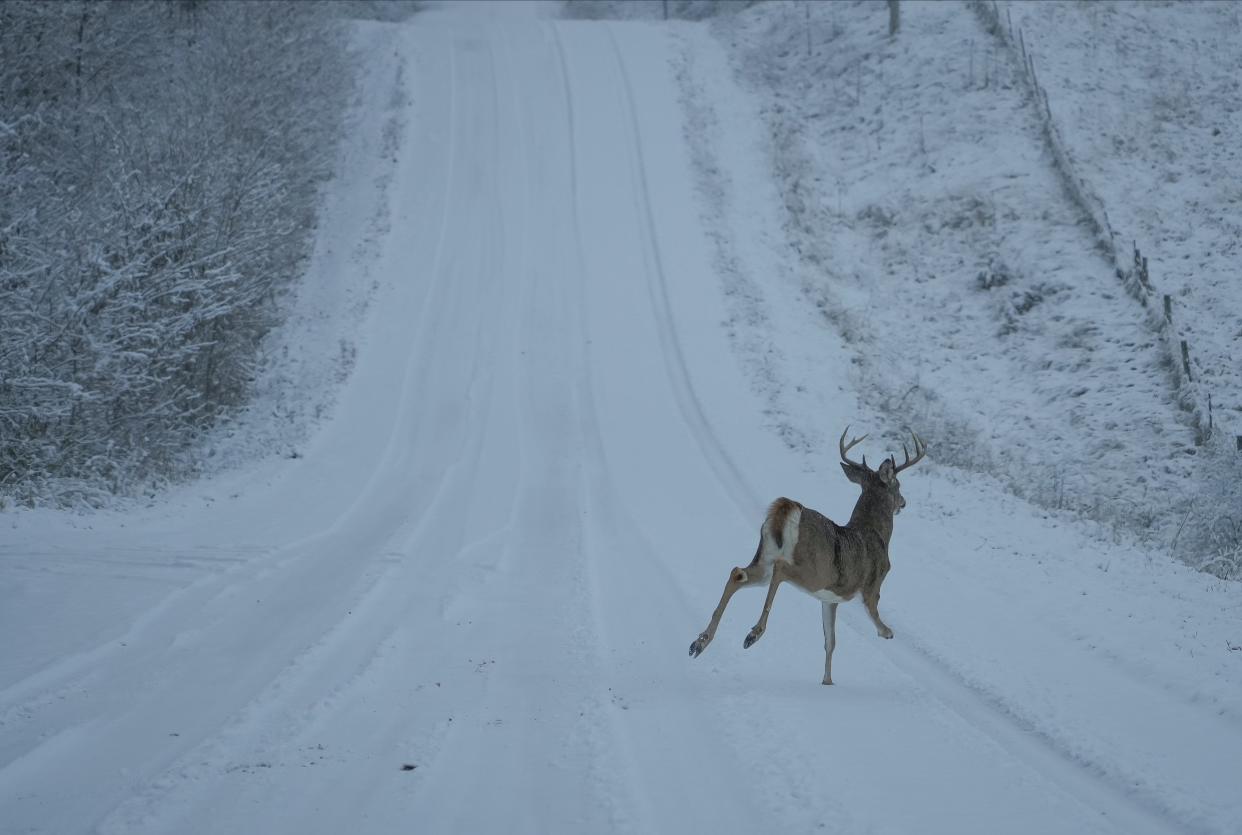Epizootic hemorrhagic disease outbreak affecting Iowa's whitetail deer population

An outbreak in Iowa this year of a disease that causes deer to bleed internally and often results in death is poised to be the second-worst since the first known outbreak occurred 11 years ago, according to the Iowa Department of Natural Resources.
Epizootic hemorrhagic disease is caused by a virus that is spread by the bites of tiny flies that are informally known as “no-see-ums” because they are so small — about one to three millimeters in length.
The pesky creatures bite people as well, but the virus is not known to affect humans.
So far this year, those bites have resulted in 1,876 suspected EHD deaths in Iowa’s whitetail deer, predominantly in the far southeastern part of the state, said Jace Elliott, the state deer biologist. The disease is not believed to transmit from deer to deer.
The virus has infected deer across most of Iowa this year and is the most widespread outbreak documented by the DNR so far.
There have been reports of deaths in 76 of the state’s 99 counties, and more identifications are possible during the upcoming hunting seasons in December, when hunters with shotguns canvass wild areas that are less frequently traversed.
The reported death toll from the outbreak is likely to increase during those hunting seasons and surpass the outbreak of 2019, which had slightly more deaths than what have been tallied so far this year, Elliott said.
Nearly 3,000 suspected EHD deaths of deer were recorded in 2012, when the disease was first detected in the state. The true number of deaths is likely higher because not all of them are detected.
The most obvious signs of EHD infections are dead deer near water, where they are driven by fevers that are associated with the disease.
Elliott said outbreaks are generally expected to happen every three to five years, and weather can play a large role.
The tiny fly needs water or wet ground to reproduce, but the disease is more quickly spread when deer congregate near water when it is less available.
Last winter was the fourth-wettest on record, which led to abundant soil moisture in southeast Iowa, where most of this year’s EHD cases have been recorded. But that area became drier after the spring and is now suffering from significant drought.
There were some late summer rains that likely bolstered the fly population, Elliott said, and a warm fall delayed the freezing temperatures that kill the insects, which created an extended opportunity for infections.
“We’ve had some killing frosts, enough that I would expect that we’re 99% done,” Elliott said Thursday. “I’d be surprised if people were finding fresh deaths at this point.”
The virus has the potential to infect certain livestock, but no infections have been reported to state ag officials, said Don McDowell, a spokesperson for the Iowa Department of Agriculture and Land Stewardship.
The deer deaths are not expected to have a large affect on overall hunting this year, but there might be some localized areas that have noticeably fewer deer.
“This disease can absolutely devastate populations for a landowner or a section of land,” Elliott said.
The last outbreak in 2019 hit Warren County the hardest, and it took about two or three years for the deer population to recover, he said.
That year stands apart from this year’s outbreak because nearly 800 suspected deaths — more than a third of the state total — happened in Warren County.
As of Nov. 24, the southeast counties with the highest totals this year include Van Buren at 182, Henry at 163, Washington at 129 and Davis at 120.
Clayton County in northeast Iowa has 130 suspected deaths, but all of its surrounding counties have fewer than 10 or none.
There are many other counties across southern Iowa with dozens of suspected deaths.
Hunters who encounter dead deer can report them to their local conservation officer or wildlife management staff, Elliott said.
Chronic wasting disease on the rise
The DNR is also soliciting deer tissue samples from hunters to test for chronic wasting disease, a fatal affliction that is entering a phase of exponential growth in Iowa.
Nearly 100 deer were found to be infected last year — almost double the number of the previous year. Most of them were in far northeast or south-central Iowa, but diseased dear have been identified in western and central Iowa as well.
The DNR has confirmed the disease in four deer this year, including in Marshall County for the first time.
It’s common for the state to have fewer than 10 detections leading into the deer shotgun seasons of December, when the majority of tissue samples are obtained, said Tyler Harms, a DNR wildlife research biometrician.
He said the department has tested about 1,600 samples this year, whereas the annual total is typically about 6,000. Hunter kill about 100,000 deer in Iowa each year.
Find this story at Iowa Capital Dispatch, which is part of States Newsroom, a network of news bureaus supported by grants and a coalition of donors as a 501c(3) public charity. Iowa Capital Dispatch maintains editorial independence. Contact Editor Kathie Obradovich for questions: kobradovich@iowacapitaldispatch.com.
This article originally appeared on Sioux Falls Argus Leader: Fatal deer disease outbreak in Iowa this year could be second-worst

